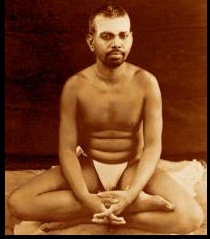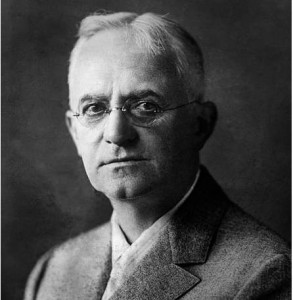 When Paramahamsa Yogananda was in his late 20’s he established a residential school in a palace donated by the Maharaja of Kasimbazar. The palace came with 25 acres of land that had fruit orchards and wildlife. This school held its classes outdoors weather permitting. Besides normal school curriculum it also taught students a form of physical yoga-postures that Yogananda devised himself and called “yogoda”.
When Paramahamsa Yogananda was in his late 20’s he established a residential school in a palace donated by the Maharaja of Kasimbazar. The palace came with 25 acres of land that had fruit orchards and wildlife. This school held its classes outdoors weather permitting. Besides normal school curriculum it also taught students a form of physical yoga-postures that Yogananda devised himself and called “yogoda”.
A young deer soon became the favorite pet of the students. Even Yogananda loved the fawn and allowed it to sleep in his room. One day he learnt that the fawn was terribly ill. Upset about this he kept the fawn in his lap and went into deep meditation. After hours of deep meditation the fawn seem to revive and began walking around feebly. A cry of joy went up with the student community and everybody thought that the fawn had turned the corner.
That night the fawn came to Yogananda in his dream and said, “You are holding me back! Please let me go!” In his dream Yogananda answered, “All right.”
Yogananda woke up with a start and realized his mistake. He knew that he had to allow the fawn to move on. He immediately woke up the boys in the dorm and announced that the fawn was dying. They all gathered around it. The fawn struggled up and tottered towards Yogananda, collapsed, and died at his feet.
This incident cast a deep impression on Yogananda. He realized that his love for the fawn was holding it back and preventing the natural evolution of its soul. From now on he no longer viewed death as a calamity. Instead he saw death as part of normal cycle through which a soul evolves. He now saw that ignorance of our true nature causes us to be deluded with the idea that death ends it all.
This story has useful lessons for us too. In our delusion and love there are times when we too try and hold back our loved ones and prevent them from moving on. It is the purpose of yoga to free us from such delusions and know our true nature. This direct experience of our deeper Self then gives us the wisdom to view birth and death as part of a natural cycle of an evolving soul.
Related post: Miss Me But Let Me Go
There is a side note to this story. Yogananda’s youngest brother, Bishnu Gosh, studied at this school in Ranchi and learnt the Yogoda system of hatha yoga. He then became the guru of Bikram Choudary the founder of hot yoga.



